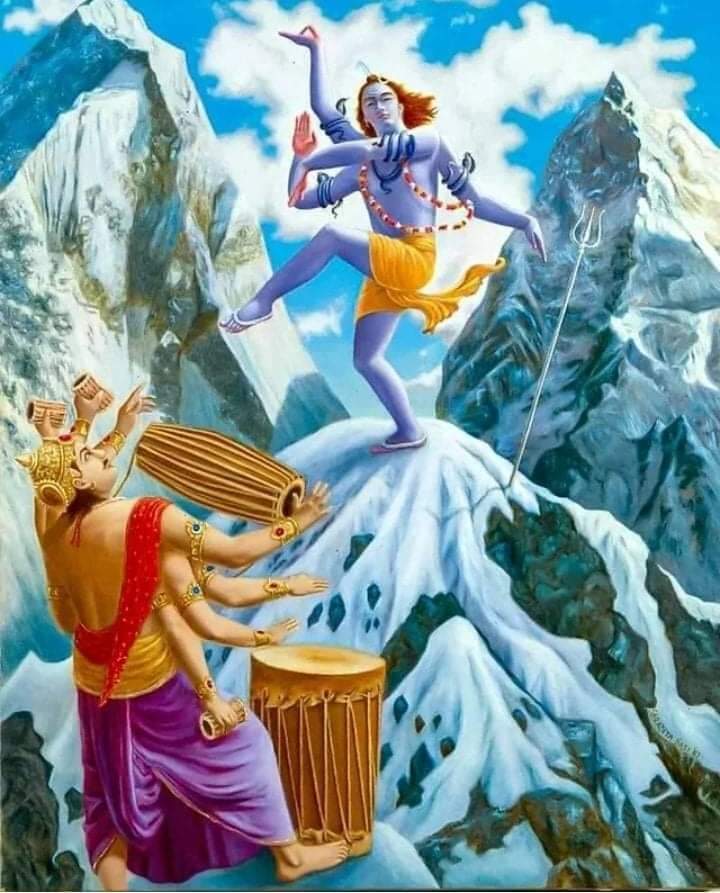
🌺संस्कृत के बारे में रोचक तथ्य🌺
- Sanskrit is the oldest language of the World & truly termed as the language of Gods.Records r available up until 3000ys ago when Sanskrit was spoken. In 500 BCE Panini wrote the first grammar of the World in Sanskrit language named Ashtadhyayi
- Sanskrit is the oldest language of the World & truly termed as the language of Gods.Records r available up until 3000ys ago when Sanskrit was spoken. In 500 BCE Panini wrote the first grammar of the World in Sanskrit language named Ashtadhyayi

- Sanskrit is the language of the oldest text of the World (Rigved) and that's why there is no doubt in it being the oldest language of the World.
- Sanskrit is the most scientific language of the World.
- Sanskrit is the most scientific language of the World.
- Sanskrit is not just a language but it's a thought process,its our tradition,its our culture,its a sacrament.
Sanskrit is the key to world peace and prosperity. Sanskrit nurtures the thought of whole World being one big family.
संस्कृत में निहित वसुदैव कुटुम्बकम् की भावना है।
Sanskrit is the key to world peace and prosperity. Sanskrit nurtures the thought of whole World being one big family.
संस्कृत में निहित वसुदैव कुटुम्बकम् की भावना है।
- According to the Sanskrit Scholars, from one end of sun are born 9 beams of light. And these beams come out from all the four directions. The number comes out to be 9x4=36, and so on the basis of the sounds of these 36 beams of light, 36 letters of Sanskrit were formed.
- NASA says that 6th and 7th generation Supercomputers will be based on Sanskrit language.
- Sanskrit is the official state language of Uttarakhand.
- Sanskrit is the official state language of Uttarakhand.
- Before Islamic invasion,Sanskrit was the national language of India.
- In Mattur Village of Karnataka,people still speak Sanskrit.
- In Germany,14 Universities r teaching Sanskrit to people but still the demand is very high as more & more people want to learn it there.
- In Mattur Village of Karnataka,people still speak Sanskrit.
- In Germany,14 Universities r teaching Sanskrit to people but still the demand is very high as more & more people want to learn it there.
- संस्कृत में बात करने से मानव शरीर का तंत्रिका तंत्र सक्रिय रहता है। जिससे कि व्यक्ति का शरीर सकारात्मक आवेश के साथ सक्रिय हो जाता है।
- यूनेस्को(UNESCO) ने भी मानवता की अमूर्त सांस्कृतिक विरासत की अपनी सूची में संस्कृत वैदिक जाप को जोड़ने का निर्णय लिया गया है।
- यूनेस्को(UNESCO) ने भी मानवता की अमूर्त सांस्कृतिक विरासत की अपनी सूची में संस्कृत वैदिक जाप को जोड़ने का निर्णय लिया गया है।
- यूनेस्को(UNESCO) ने माना है कि संस्कृत भाषा में वैदिक जप मानव मन, शरीर और आत्मा पर गहरा प्रभाव पड़ता है।
- शोध से पाया गया है कि संस्कृत (Sanskrit) पढ़ने से स्मरण शक्ति (याददाश्त) बढ़ती है।
- संस्कृत वाक्यों में शब्दों को किसी भी क्रम में रखा जा सकता है।
- शोध से पाया गया है कि संस्कृत (Sanskrit) पढ़ने से स्मरण शक्ति (याददाश्त) बढ़ती है।
- संस्कृत वाक्यों में शब्दों को किसी भी क्रम में रखा जा सकता है।
इससे अर्थ का अनर्थ होने की बहुत कम या कोई भी सम्भावना नहीं होती। ऐसा इसलिए होता है क्योंकि सभी शब्द विभक्ति और वचन के अनुसार होते हैं। जैसे- 'अहं गृहं गच्छामि' या 'गच्छामि गृहं अहं' दोनों ही ठीक हैं।
- नासा के वैज्ञानिकों के अनुसार जब वो अंतरिक्ष ट्रैवलर्स को मैसेज भेजते थे तो उनके वाक्य उलट हो जाते थे। इस वजह से मैसेज का अर्थ ही बदल जाता था। उन्होंने कई भाषाओं का प्रयोग किया लेकिन हर बार यही समस्या आई।
आखिर में उन्होंने संस्कृत में मैसेज भेजा क्योंकि संस्कृत के वाक्य उलटे हो जाने पर भी अपना अर्थ नहीं बदलते हैं।जैसा के ऊपर बताया गया है।
- संस्कृत भाषा में किसी भी शब्द के समानार्थी शब्दों की संख्या सर्वाधिक है, जैसे हाथी शब्द के लिए संस्कृत में १०० से अधिक समानार्थी शब्द हैं।
🙏
- संस्कृत भाषा में किसी भी शब्द के समानार्थी शब्दों की संख्या सर्वाधिक है, जैसे हाथी शब्द के लिए संस्कृत में १०० से अधिक समानार्थी शब्द हैं।
🙏
• • •
Missing some Tweet in this thread? You can try to
force a refresh


















